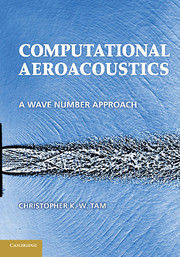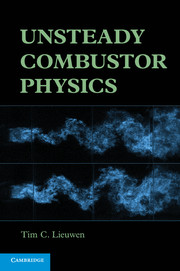Refine search
Actions for selected content:
5487 results in Thermal-fluids engineering
5 - Conical Counterflows Driven by Swirl
-
- Book:
- Counterflows
- Published online:
- 05 November 2012
- Print publication:
- 15 October 2012, pp 73-121
-
- Chapter
- Export citation
8 - Separation Counterflows
-
- Book:
- Counterflows
- Published online:
- 05 November 2012
- Print publication:
- 15 October 2012, pp 219-265
-
- Chapter
- Export citation
14 - Stability of Conical Flows
-
- Book:
- Counterflows
- Published online:
- 05 November 2012
- Print publication:
- 15 October 2012, pp 411-456
-
- Chapter
- Export citation
Index
-
- Book:
- Counterflows
- Published online:
- 05 November 2012
- Print publication:
- 15 October 2012, pp 467-470
-
- Chapter
- Export citation
13 - Magnetic Counterflows
-
- Book:
- Counterflows
- Published online:
- 05 November 2012
- Print publication:
- 15 October 2012, pp 379-410
-
- Chapter
- Export citation
3 - Bifurcation of Swirl in Conical Counterflows
-
- Book:
- Counterflows
- Published online:
- 05 November 2012
- Print publication:
- 15 October 2012, pp 28-59
-
- Chapter
- Export citation

Computational Aeroacoustics
- A Wave Number Approach
-
- Published online:
- 05 October 2012
- Print publication:
- 28 September 2012

Unsteady Combustor Physics
-
- Published online:
- 05 October 2012
- Print publication:
- 27 August 2012
Preface
-
- Book:
- Computational Aeroacoustics
- Published online:
- 05 October 2012
- Print publication:
- 28 September 2012, pp xi-xiv
-
- Chapter
- Export citation
Frontmatter
-
- Book:
- Computational Aeroacoustics
- Published online:
- 05 October 2012
- Print publication:
- 28 September 2012, pp i-vi
-
- Chapter
- Export citation
Chapter 13 - Complex Geometry
-
- Book:
- Computational Aeroacoustics
- Published online:
- 05 October 2012
- Print publication:
- 28 September 2012, pp 263-297
-
- Chapter
- Export citation
Appendix C - The Method of Characteristics
-
- Book:
- Computational Aeroacoustics
- Published online:
- 05 October 2012
- Print publication:
- 28 September 2012, pp 398-399
-
- Chapter
- Export citation
8 - Computation of Nonlinear Acoustic Waves
-
- Book:
- Computational Aeroacoustics
- Published online:
- 05 October 2012
- Print publication:
- 28 September 2012, pp 130-143
-
- Chapter
- Export citation
11 - Extrapolation and Interpolation
-
- Book:
- Computational Aeroacoustics
- Published online:
- 05 October 2012
- Print publication:
- 28 September 2012, pp 203-228
-
- Chapter
- Export citation
12 - Multiscales Problems
-
- Book:
- Computational Aeroacoustics
- Published online:
- 05 October 2012
- Print publication:
- 28 September 2012, pp 229-262
-
- Chapter
- Export citation
References
-
- Book:
- Computational Aeroacoustics
- Published online:
- 05 October 2012
- Print publication:
- 28 September 2012, pp 471-476
-
- Chapter
- Export citation
Appendix E - Accelerated Convergence to Steady State
-
- Book:
- Computational Aeroacoustics
- Published online:
- 05 October 2012
- Print publication:
- 28 September 2012, pp 403-406
-
- Chapter
- Export citation
Appendix D - Diffusion Equation
-
- Book:
- Computational Aeroacoustics
- Published online:
- 05 October 2012
- Print publication:
- 28 September 2012, pp 400-402
-
- Chapter
- Export citation
7 - The Short Wave Component of Finite Difference Schemes
-
- Book:
- Computational Aeroacoustics
- Published online:
- 05 October 2012
- Print publication:
- 28 September 2012, pp 112-129
-
- Chapter
- Export citation
3 - Time Discretization
-
- Book:
- Computational Aeroacoustics
- Published online:
- 05 October 2012
- Print publication:
- 28 September 2012, pp 38-44
-
- Chapter
- Export citation
